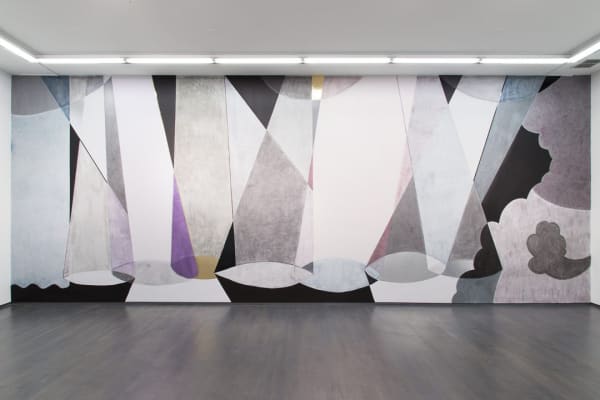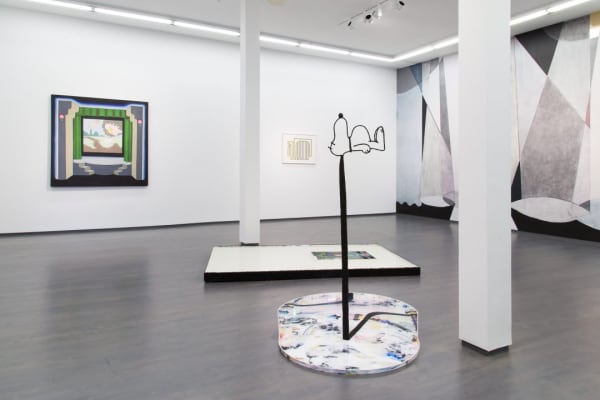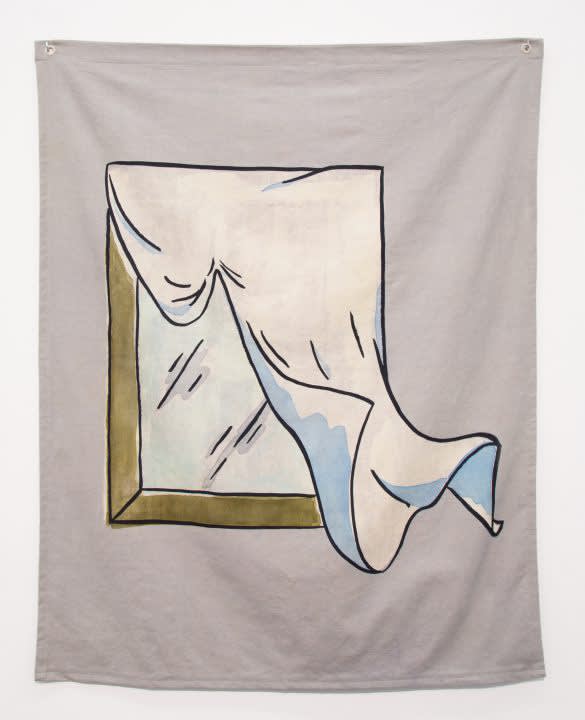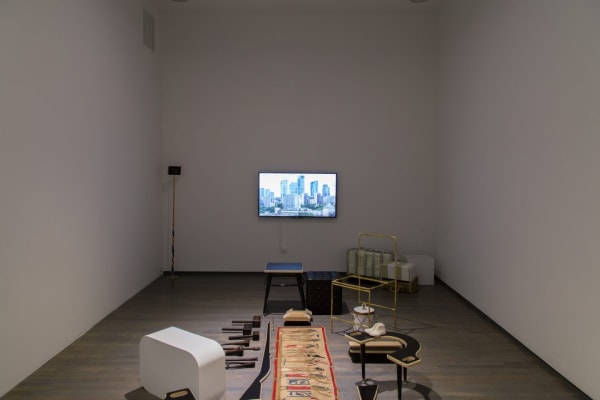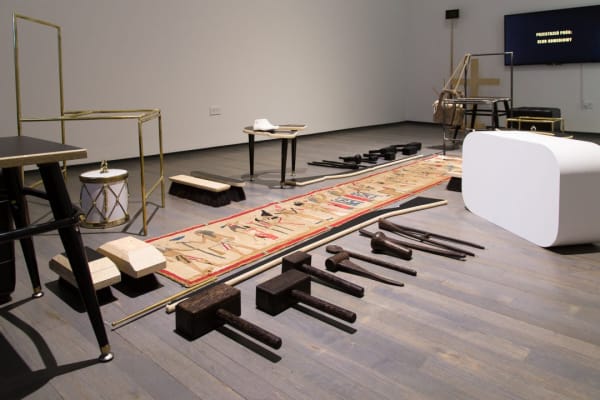Centered around performativity in visual arts, Gist & Gesture includes paintings, objects, photographs and other projects that utilize dramatic techniques. Taking the position that depiction and artifice serve an important social function, the exhibition brings together artworks that use illusion to striking effect.
Being an artist is like being a stand up comedian, all alone on the stage or in the studio, communicating, boiling down ideas to transferable form. These artists display a constellation of approaches, some literally referencing the methods of theater—others using more generally its tools of gesture, vignette, light and shadow. The stage and the canvas have in common their given form, a set of boundaries within which stories can be told, this exhibition investigates where these two mediums borrow technique from one another.
Roger Brown’s paintings of the late 1960’s used movie theater settings to showcase surreal imagery. Dreamlike images are bracketed by curtains and other architectural flourishes, which are in turn bracketed by the brisk edge of the canvas. Brown’s letters home show his love of theater, he detailed the great productions he was seeing in Chicago. He also designed the set for a 1979 Chicago Opera Theater production of Così Fan Tutte. His interest in theatrical productions carries into his later work, with urban facades like movie sets, silhouetted figures, and sunsets like theatrical backdrops.
Gist & Gesture marks the debut of a new installation, film, and theater work by Catherine Sullivan, Katarzyna Wińska and her Warsaw-based theater company Teatr Opera Buffa, and Beata Pilch from Chicago’s Trapdoor Theatre. The work nests three theatrical sources: excerpts from Opera Buffa’s play Eternal Rest, set in a spa for workaholics; the archive of renowned experimental theater director Tadeusz Kantor; and actions from Beata Pilch’s twenty–year repertoire. This project was first realized at Cricoteka/Centre for the Documentation of the Art of Tadeusz Kantor in Krakow in 2014 as part of the exhibition Nic 2 Razy and will include a presentation of surrogates of Kantor’s original props.
Edie Fake’s intricate gouache and ink drawings offer us buildings as allegory. Architectural spaces give way to abstraction, impossible spaces woven into the flats of film and television. Familiar queer havens, in this case Union Station, are immortalized with exacting lines and slippery perspective.
Barbara Kasten has been celebrated for her quasi-constructivist, Bauhaus-inspired photography for many years. Using photographic space as a stage, Kasten’s sources have varied widely in scale from studio size set-ups to postmodern buildings peered at through movie sets to assemble tightly choreographed compositions. Their use of light, shadow, and transparency calls up the illusory techniques of live theater and results in a painterly tableau.
Aay Preston-Myint has produced a site-responsive wall drawing for the exhibition. Often using printmaking and staging events to build community, Preston-Myint designed this mural after the veilings and artifice of theatrical vignetting. The piece imagines the gallery wall as a stage, a window out into a human drama.
Nicholas Sullivan presents three new sculptural works. Wells or basins embedded with mirrored Plexiglass, they provide a window out through the floor. Sullivan often utilizes recognizable narrative figures; in this case Snoopy naps on an implied doghouse. The wise beagle was a silent guiding force in the child society of Peanuts—here he acts as a mascot for allegory.
Special thanks to the artists, Bortolami Gallery, Western Exhibitions, Jessica Campbell and Sarah Mendelsohn.




